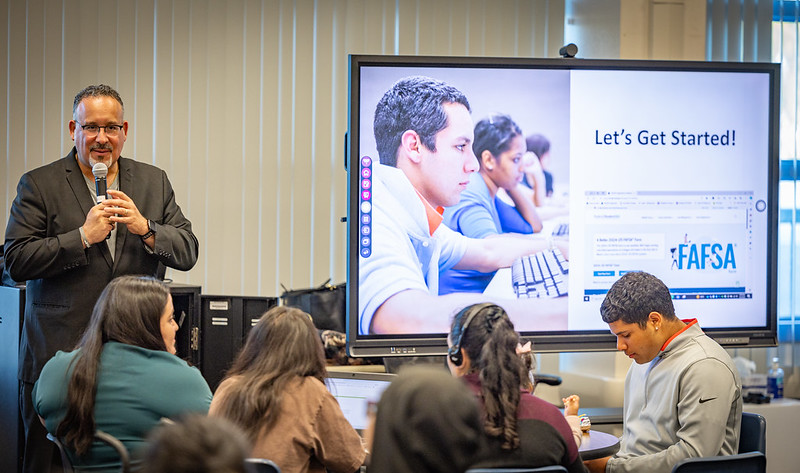According to the US Department of Education, fewer Michigan high school seniors have completed the Free Application for Federal Student Aid (FAFSA) this year compared to last year. Michigan’s statewide deadline for completing the form is June 30. Current data show that 43.5% of Michigan’s 111,000 high school seniors have created a complete financial aid application.
The FAFSA completion rate is important because it is a loose indicator of how many high school seniors intend to enter college this fall. About 48,300 Michigan high school seniors filled out the form, which is a decrease of more than 7,800 applications compared to last year as of May 31. In the previous filing cycle, a total of 59,450 high school seniors eventually submitted a completed application. Submissions of completed applications are currently down by nearly 14% from last year.
That’s not great news for pretty much anyone in this picture. Although a significant number of new college students don’t submit a FAFSA form in most years, the data suggest that college enrollment among Michigan’s recent high school graduates will remain in decline. It might be convenient to fault the new FAFSA process, but that doesn’t change the circumstances here.
Despite news to the contrary, most high school seniors see the value in earning a college degree. What they don’t see is a pathway to that outcome. In their minds, the expense of a four-year degree often zeroes out the earnings potential – even when taking a long-term view. Recent high school graduates question the decision to take on large student loan debts. The risk of not making enough income after graduation to live comfortably and repay student loan debt is real. They would rather take their chances in the workplace than mortgage their future with impossibly large student loan repayments.
Financial aid availability is only one part of the enrollment decision
That scenario would be an opportunity for community colleges, if they had established programs that enabled these students to train for high-wage, high demand jobs and enter the workforce with minimal or no student loan debts.
Unfortunately, many community colleges have not adequately planned, prepared, or invested in new instructional programs. They have very little to offer prospective students who aren’t looking for a four-year degree but want enough education to qualify for meaningful job opportunities.
The good part about all of this – if there is anything good here – is that these recent high school graduates intend to go to college at some point. Genuine leadership here requires the community colleges to take the time – right now – to develop programs and financial aid options that these students can engage with when they are ready to go back into the classroom.
Photo Credit: US Department of Education, via Flickr









